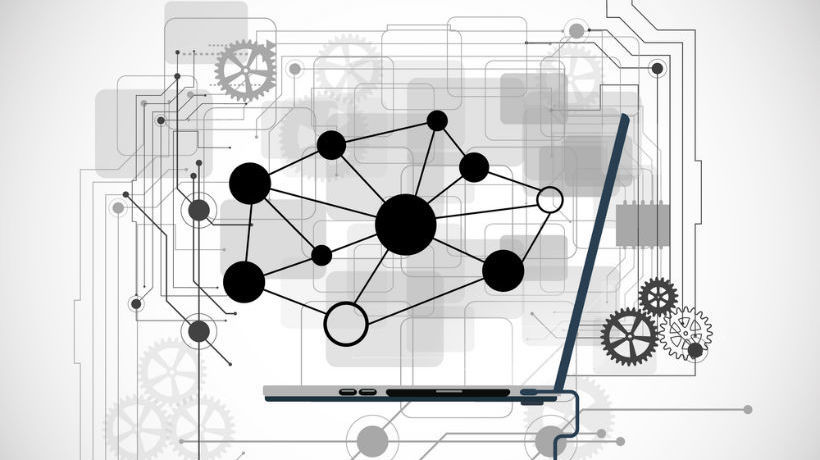What Are The Key Factors That Will Help You Improve Your Learning Programs?
L&D teams need to stay current with learning techniques, LMS/LXP platforms, and content development technologies to enhance learning experiences. However, some of the key factors that help improve learning programs are unique to each organization and require more localized responses. These factors include:
1. An Understanding Of Learner Motivations
According to LinkedIn’s 2022 Workplace Learning Report, employee motivation to learn new skills or hone existing ones is a part of their need to stay updated. This involves areas around professional developments, the need for personalized learning that fits their interests and career aspirations, and the longing to support other career ambitions—both internally and externally. It’s vital to have a clear understanding of what motivates your employees, especially your remote workforce, to improve your own learning programs.
2. An Understanding Of Learner Preferences
Encouraging learners to willingly embrace corporate learning is a key factor in shortening learning curves. It is also a critical element in improving learning programs. The key to inspiring learners is to understand how each one prefers to learn. The learning preferences of today’s workforce span across generational learners. This includes the instructor-led preference of boomers, the structured-program-preferring Gen X’ers and millennials—whereas Gen Z’ers prefer learning on the go and virtual collaborative learning. Preferences also vary depending on whether the workforce is remote or is largely an in-office staff. Tapping into those unique learner preferences will yield faster and higher-quality learning outcomes.
3. An Understanding Of Barriers That Inhibit Learning
You can’t run a successful learning program if there are obstacles for learners to access those programs. Virtual learners (working from home) may face technical challenges (slower bandwidth, dearth of tech support). Other learners, though eager to learn, may not have learning available that supports their schedules. Still, others, who work remotely and prefer mobile learning, may be unable to access content adequately suitable on small-footprint devices. Improving learning programs requires a deep understanding of these barriers and then taking steps to mitigate them.
4. Support And Guidance From Leaders
Implementing a successful learning program requires top-level support and leadership. Instead of viewing training as an “expense,” the top leadership must view it as a long-term investment in competitiveness—just as they view IT and manufacturing technology investments. This support ensures that L&D teams are able to then support the company vision through the most appropriate training programs.
How To Get Your Employees To Learn Faster And Better?
There are several quick learning strategies that L&D professionals should consider.
Minimize Cognitive Load
At a very macro level, cognitive load refers to the amount of information that a learner’s working memory can effectively hold and process. Pushing the limits of learning beyond that threshold typically results in diminishing returns—learners forget more than they learn! A good technique for minimizing cognitive load is to use scaffolding techniques like guided instructions, practice sessions, assessments, and review and remediation learning. Keeping extraneous information at bay is also a great way to limit cognitive overload.
Integrate Learning In The Flow Of Work
A proven strategy for faster learning with better learning retention outcomes is to integrate learning in the flow of work (LIFOW). Providing learners the learning tools they need within their workflow encourages a continuous flow of learning. This enables them to learn faster, promotes quicker knowledge transfer, and results in better application of learning to the workplace.
Enable Double-Loop Learning – Learning From Experience And Reflection
- Experiential learning: the best and most effective learning opportunities come from integrating learner experiences, their own reflections and those within their circle, and on-the-job encounters in their workplace. By integrating experiential learning as part of learning strategies, you can offer learners—especially in a remote workplace—the opportunity to get real-world experiences and to learn from their failures.
- Practice: with a significant portion of the workforce continuing to work virtually, creating room for practice through highly immersive approaches is a must.
- Game-based learning that mimics real-world workplaces is a great way to offer learners an experiential learning environment. It provides safe places for them to practice what they’ve learned, fail, and learn from those failures.
- Other practice tools which help learners assimilate new knowledge faster include 3D and VR simulated practice sessions, branching scenarios, and Augmented-Reality-based practice environments.
- The use of microlearning content for practice and remediation also enables opportunities for behavioral modification, faster learning, and enhanced performance.
Feedback And Coaching
Coaching and mentoring is a strategy that works well to deliver highly effective learning outcomes—fast. Because mentors and coaches can offer constructive feedback more easily via technology today, this is a great approach to use for virtual workforces and remote learners too. Through continuous two-way feedback loops, learners can also learn from mentors and coaches, quickly remedy any performance gaps, and apply them to specific workplace situations.
Make Learning A Shared Experience By Creating Learning Cohorts
Whether it’s to support in-office learners or remote employees, social and collaborative learning is a great way to boost knowledge acquisition through shared experiences and expectations. When learners interact and collaborate with other learners who share similar learning objectives and challenges, they tend to learn faster and find more creative (real-world) ways to apply their learning to their workplace. Tools to bring like-minded learners together include social media groups, chat rooms and other online groups, or in-person or virtually hosted forums.
How To Improve Learning Retention And Application Of Learning On The Job?
Here are 5 strategies to help develop better learning programs, to aid faster learning, ensure longer learning retention, and ensure a more effective application of learning on the job:
1. Make Learning Stick Through Immersive Learning Experiences
Unlike PowerPoint or static-slide presentation-based learning, immersive, experiential learning takes the learner out of the classroom and immerses him/her into a real-world learning experience. 3D content, Virtual Reality (VR) and Augmented VR (AVR), gamified learning, and simulated learning content are excellent tools to deliver “sticky,” real-life-like immersive learning experiences.
2. Offset The Forgetting Curve Through Reinforcement Learning
Unless learners can immediately practice what they’ve learned in their workplaces, they’re at risk of falling victim to the forgetting curve. To help fight the impact of “forgotten knowledge,” it’s important to add continuous learning as part of any training program. Through a structured approach of learning, application, and feedback, L&D professionals can help reinforce and retain key learning points and bring performance improvements to the job.
3. Leverage Spaced Repetition
One tried-and-tested learning retention strategy is spaced repetition. Here, training content continually revisits concepts from prior lessons and integrates them into subsequent learning modules. By spacing review and repetition over specific intervals, using microlearning content and scaffolding techniques, knowledge gets ingrained and becomes part of a “reflex” response in the workplace.
4. Drive Deliberate Practice
Practice makes perfect, deliberate, planned, and well-thought-out strategies. This, in turn, encourages repetitions and practice, helps learners learn fast, and retains proficiency longer. Parts of this strategy include rewarding learners for practicing and perfecting their skills through learning content and encouraging—through example—the use of training practice and refresher tools. Gamification, microlearning, and social learning approaches can also encourage continuous learning and practice.
5. Performance Support Tools/Job Aids
The best way for learners to use knowledge is to put it into practice. The use of just-in-time performance support tools and job aids that facilitate the application of learning are critical for employees to learn faster and facilitate more effective knowledge transference. L&D teams can empower learners with mobile apps, interactive videos, animations, interactive PDFs, eBooks, podcasts, and webcasts.
Parting Thoughts
Along with high-quality, relevant knowledge, the objective of every learning program must be to ensure employees learn faster. They should also be able to recall that learning to enhance workplace performance through the application of that knowledge. Learning retention, therefore, is key to accomplishing those objectives.
It’s critical to remember, however, that learning—and putting that learning into practice in the workplace—doesn’t happen only as a result of completing a recommended learning program. Faster learning and effective learning application requires a well-thought-out strategy of continuous learning, deliberate practice, ongoing learning support, and performance-enhancing tools and aids.
I hope the strategies mentioned in this article provide the required insights to help you develop better learning programs and aid faster learning, longer learning retention, and better application of learning on the job.
Read More:
- How to Empower Your Learners with Self-directed Learning – Featuring 7 Strategies
- How L&D Teams Can Bridge the Disconnect Between Employee Training and On-the-job Performance
- Metaverse and L&D – The Next Frontier in eLearning or Just Another Fad?
- How to Build Better Learning Experiences with Personalized Learning – Featuring 3 Examples







